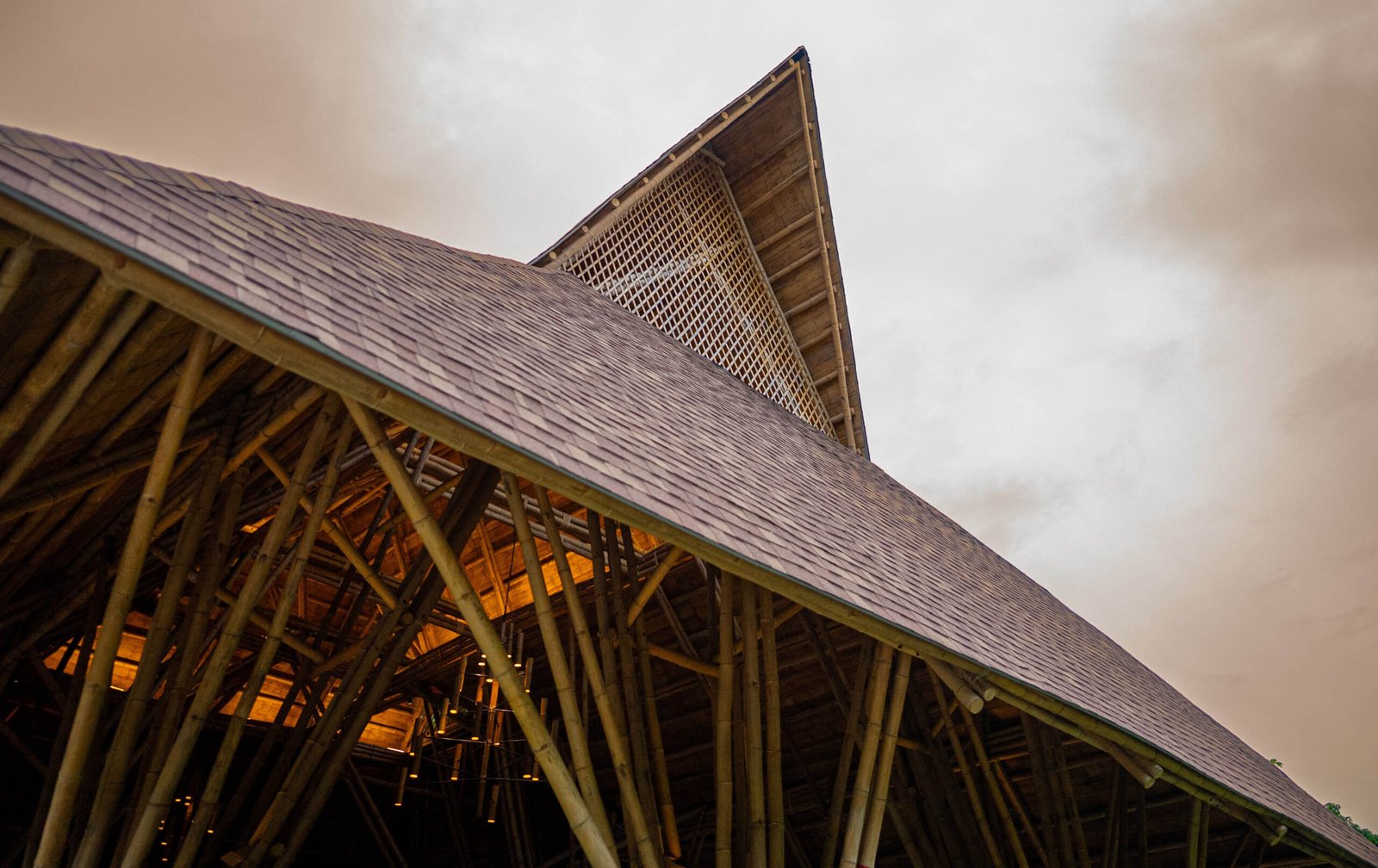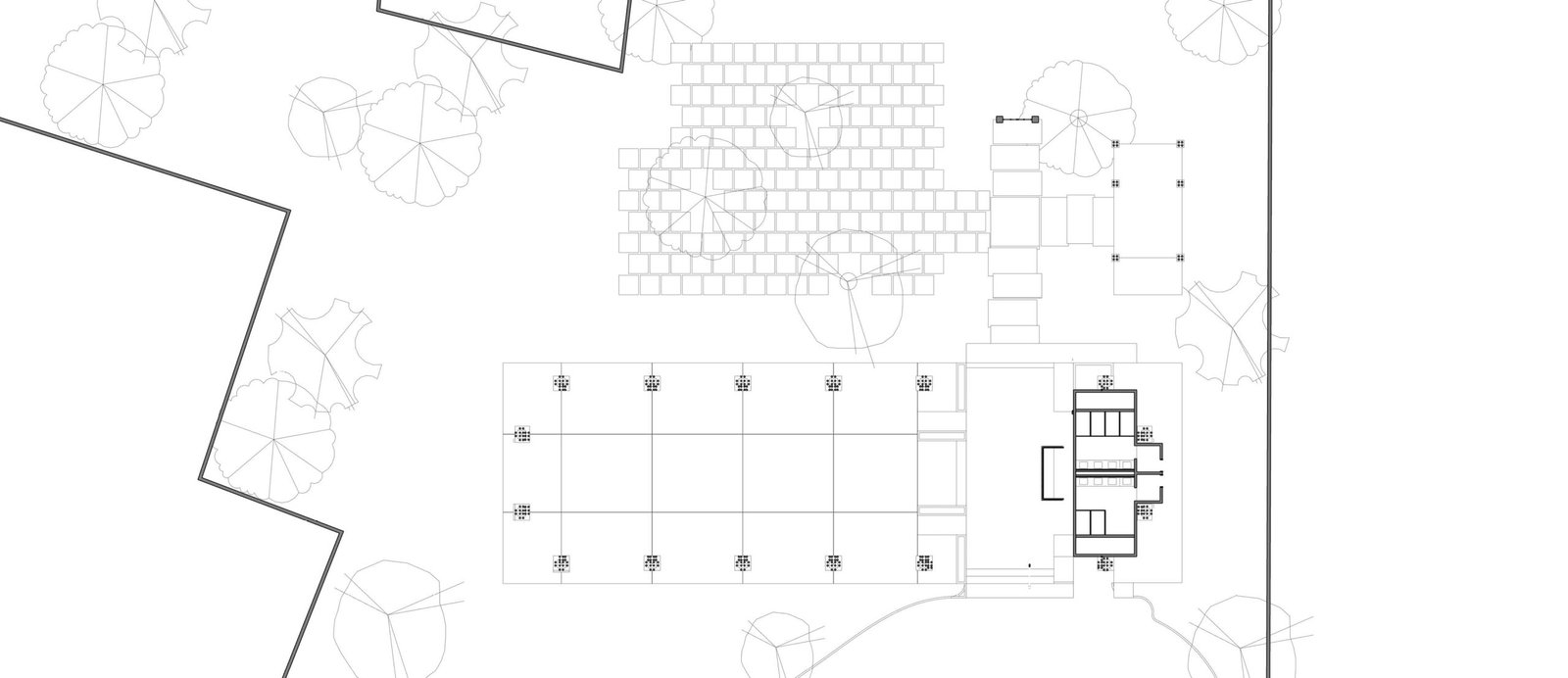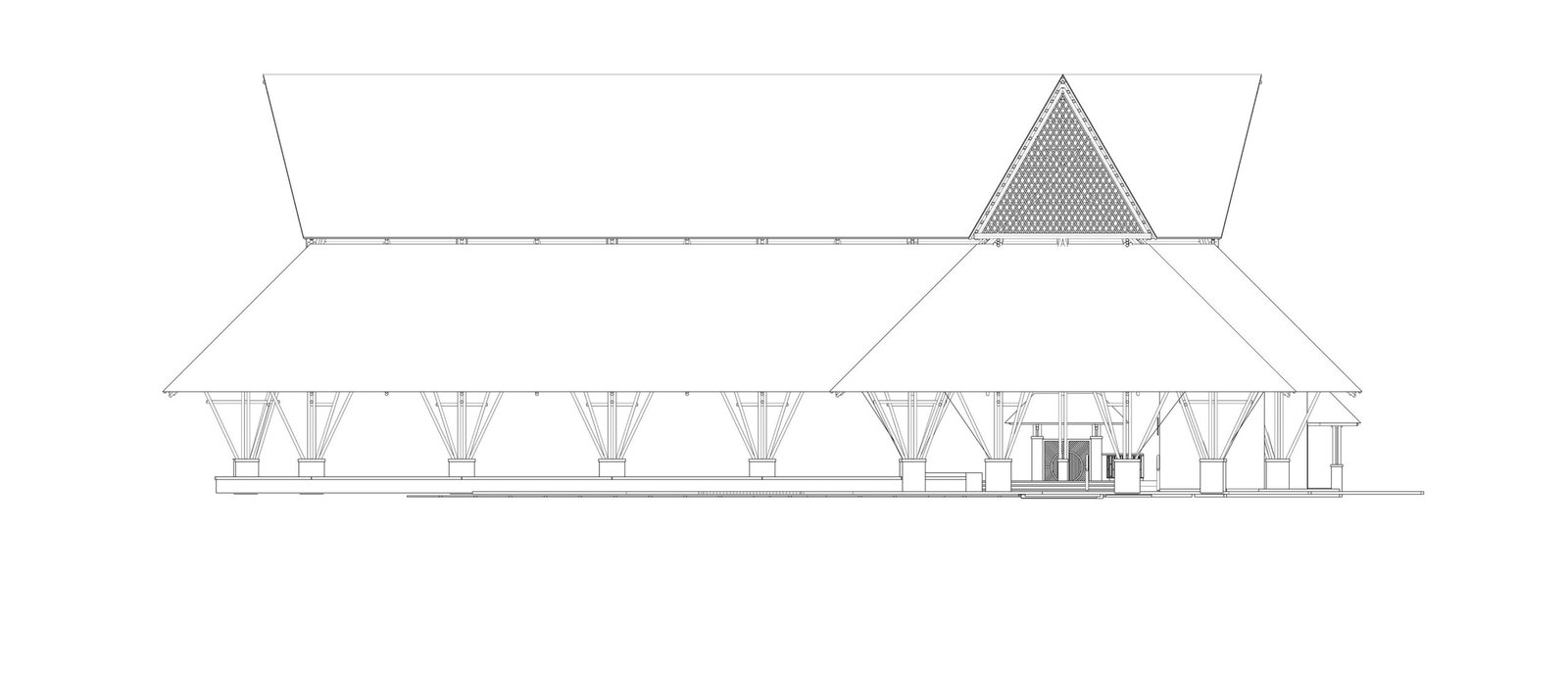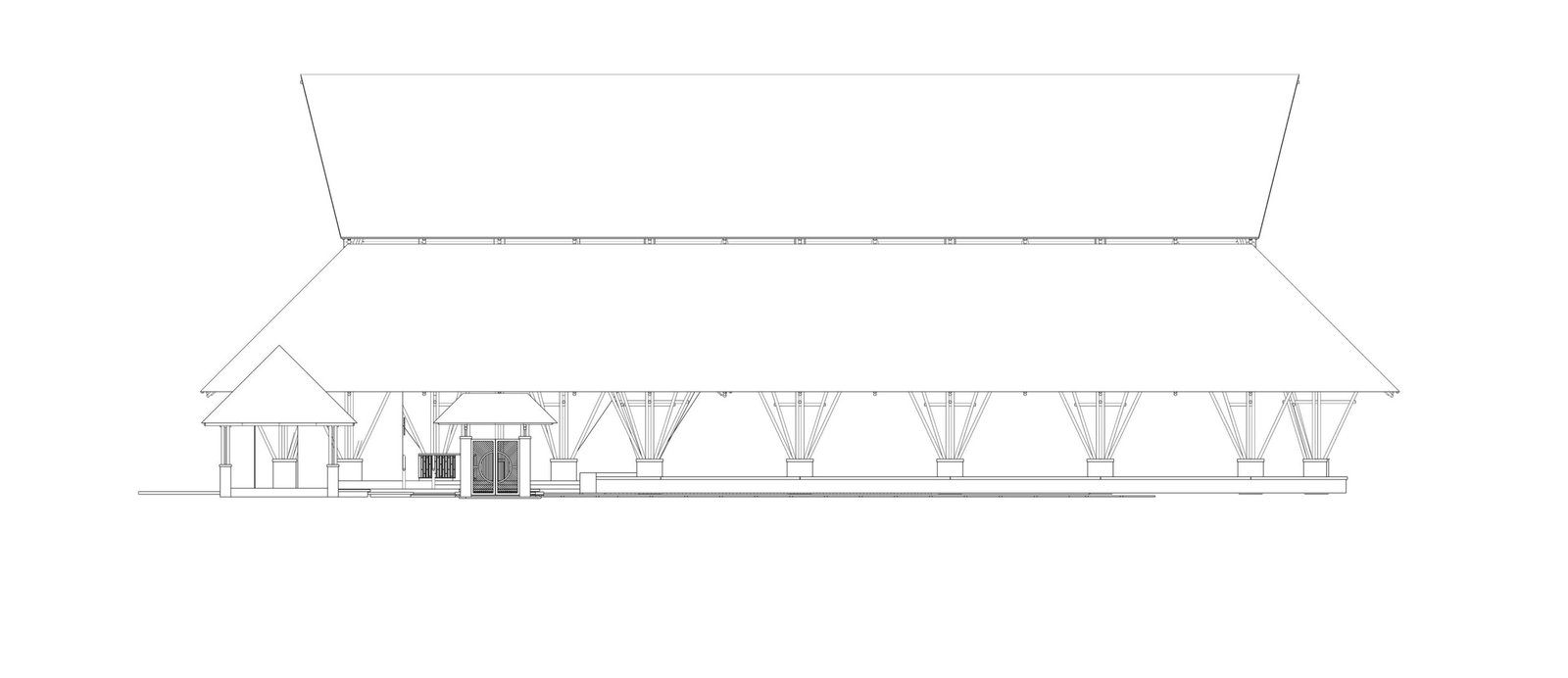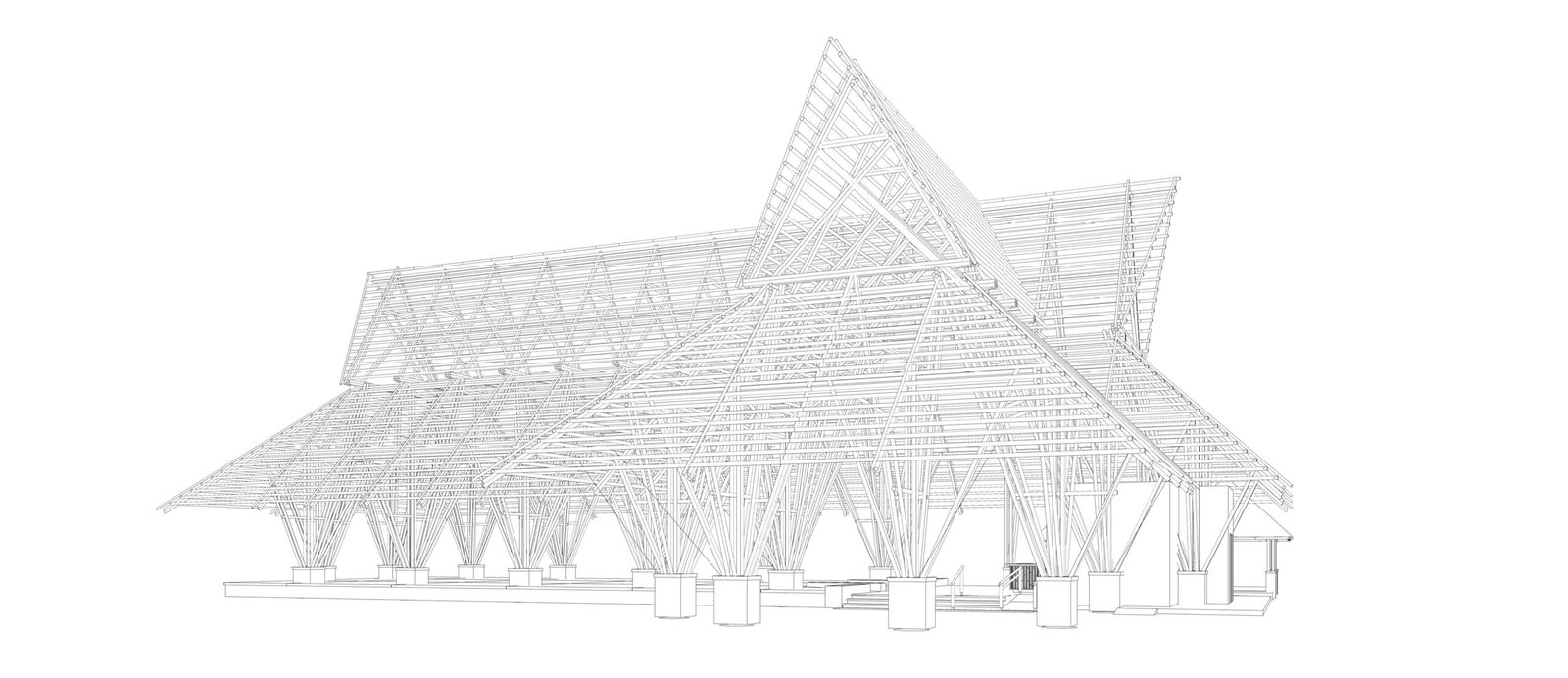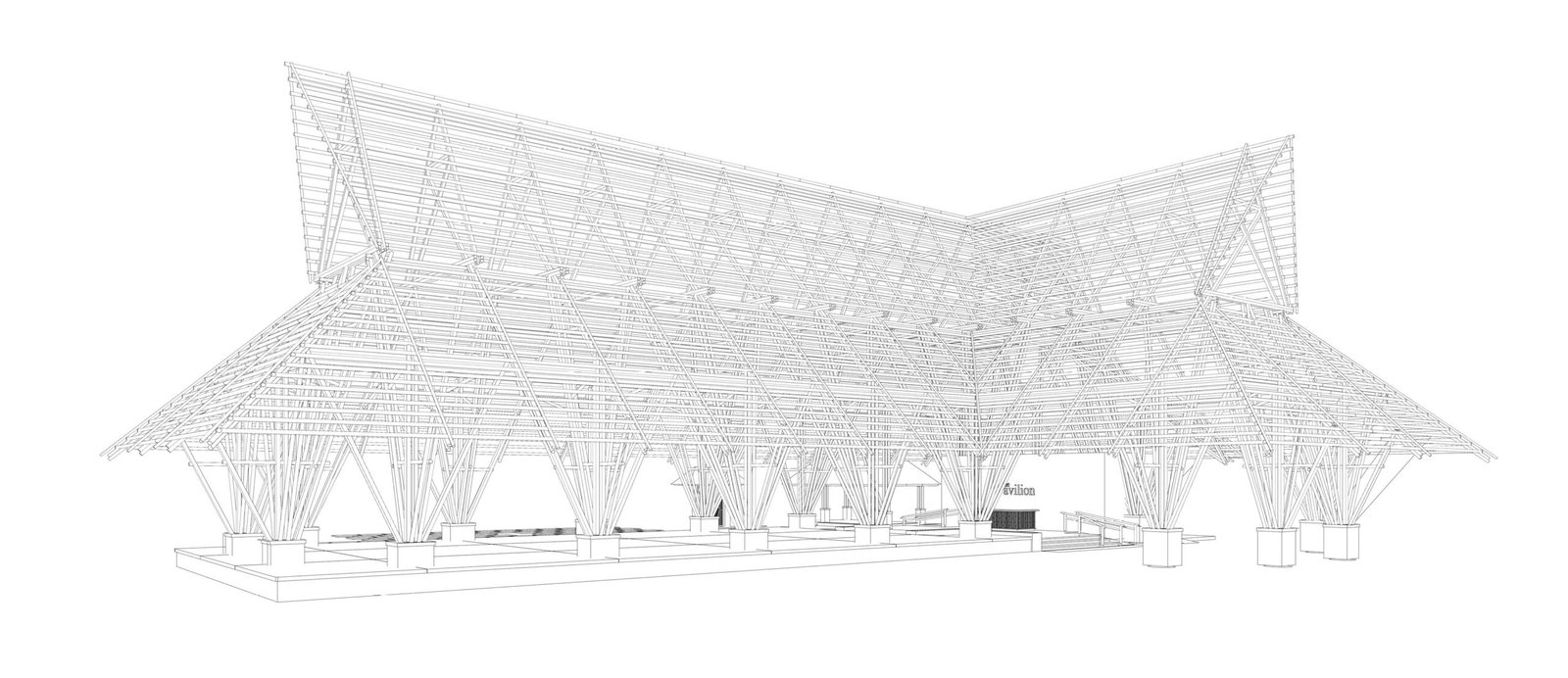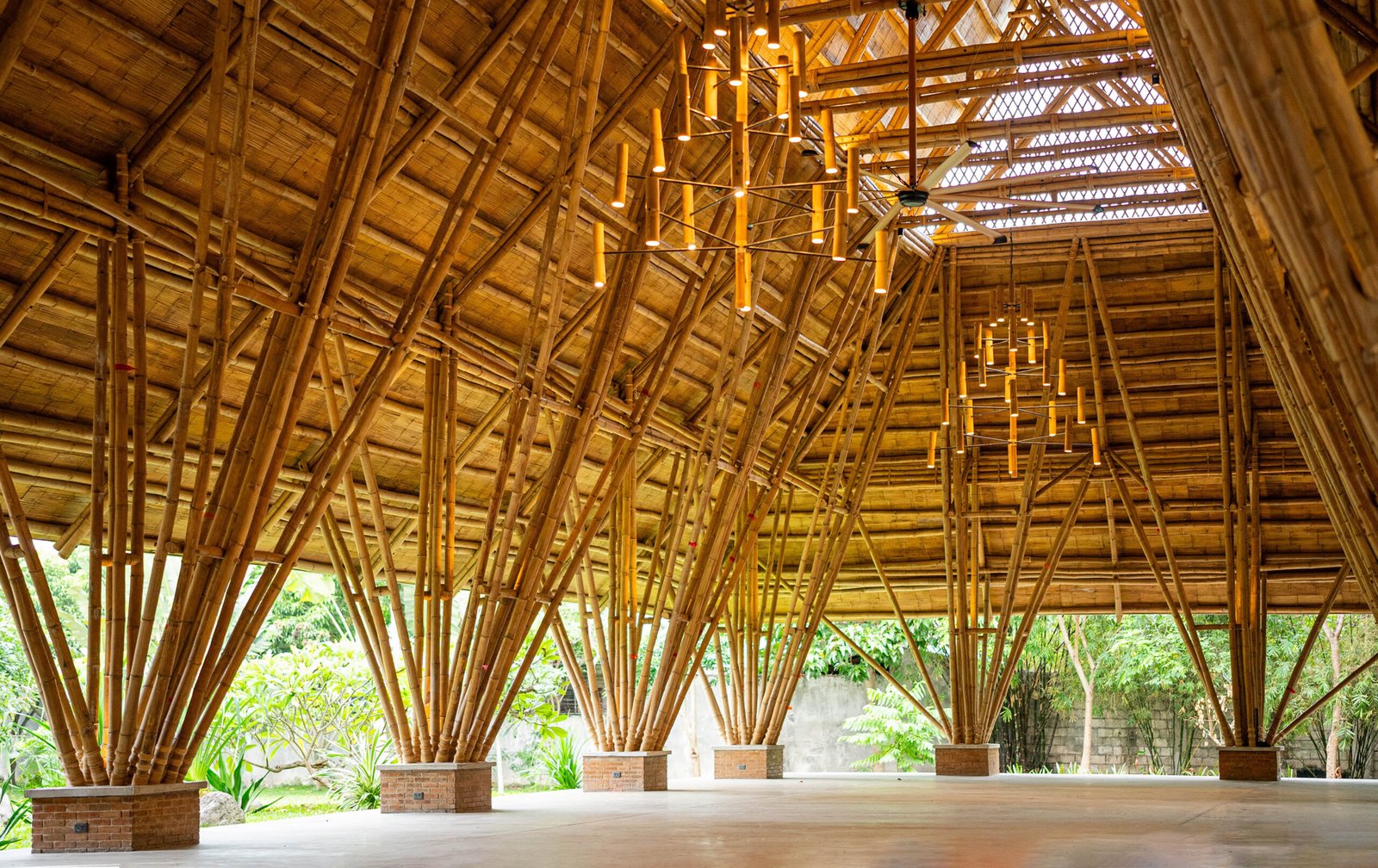Words and Images Kawayan Design Studio and Kawayan Collective
Editing The Kanto team
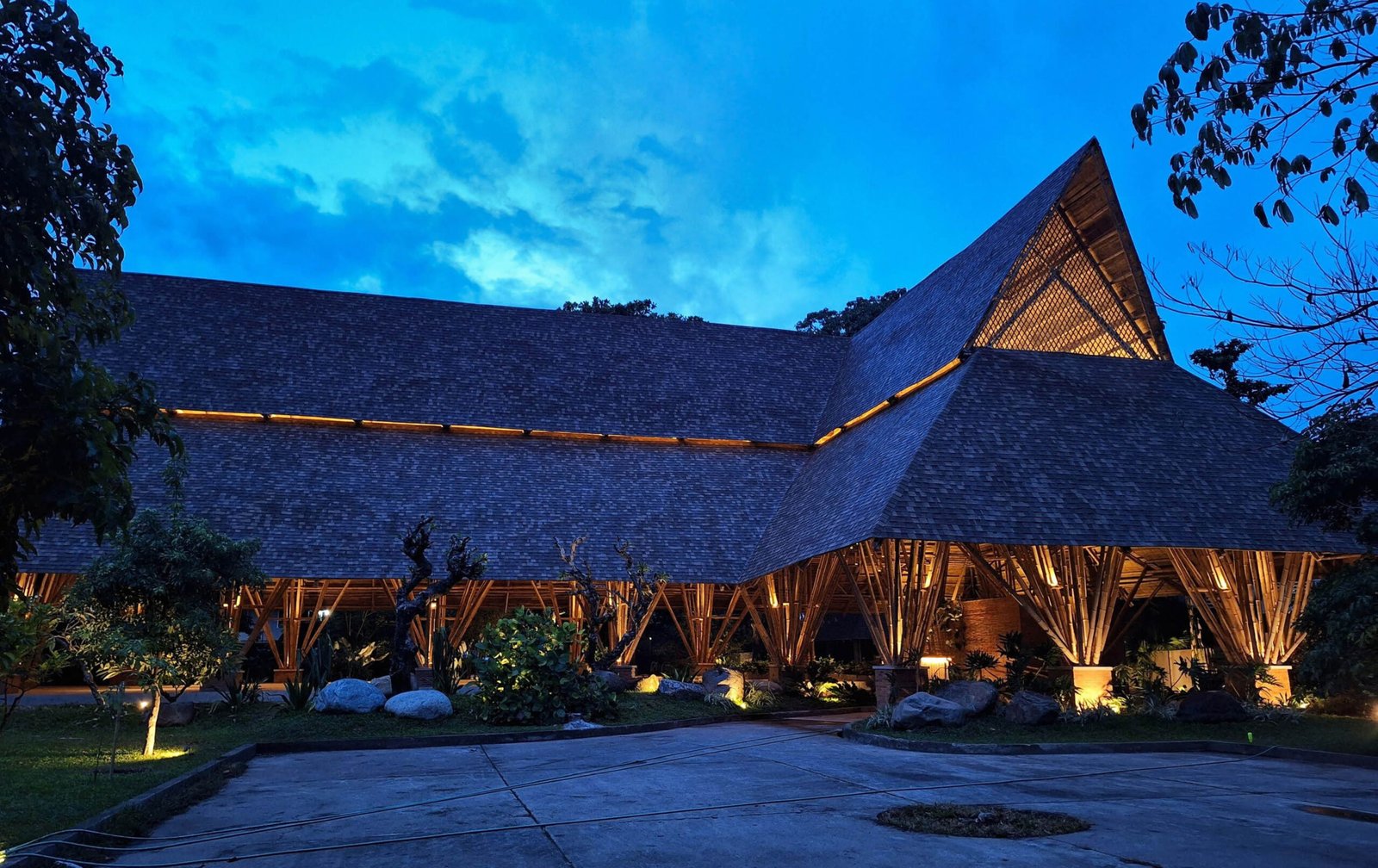

Set within the lush grounds of The Henry Resort in Dumaguete, Negros Oriental, the Bamboo Pavilion honors the region’s cultural heritage and natural abundance, symbolizing its openness to integrating both tradition and innovation through the use of bamboo. Towering at 16.5 meters and covering 575 square meters, it ranks among the tallest bamboo structures in the Philippines, proving bamboo’s suitability for ambitious, large-scale designs. The commission demanded deep expertise and intimate knowledge of bamboo, prompting its commissioner, prominent art collector Jaime Ponce de Leon, to enlist Bais-based Kawayan Design Studio, who in turn partnered with renowned bamboo supplier Kawayan Collective for the design and construction.
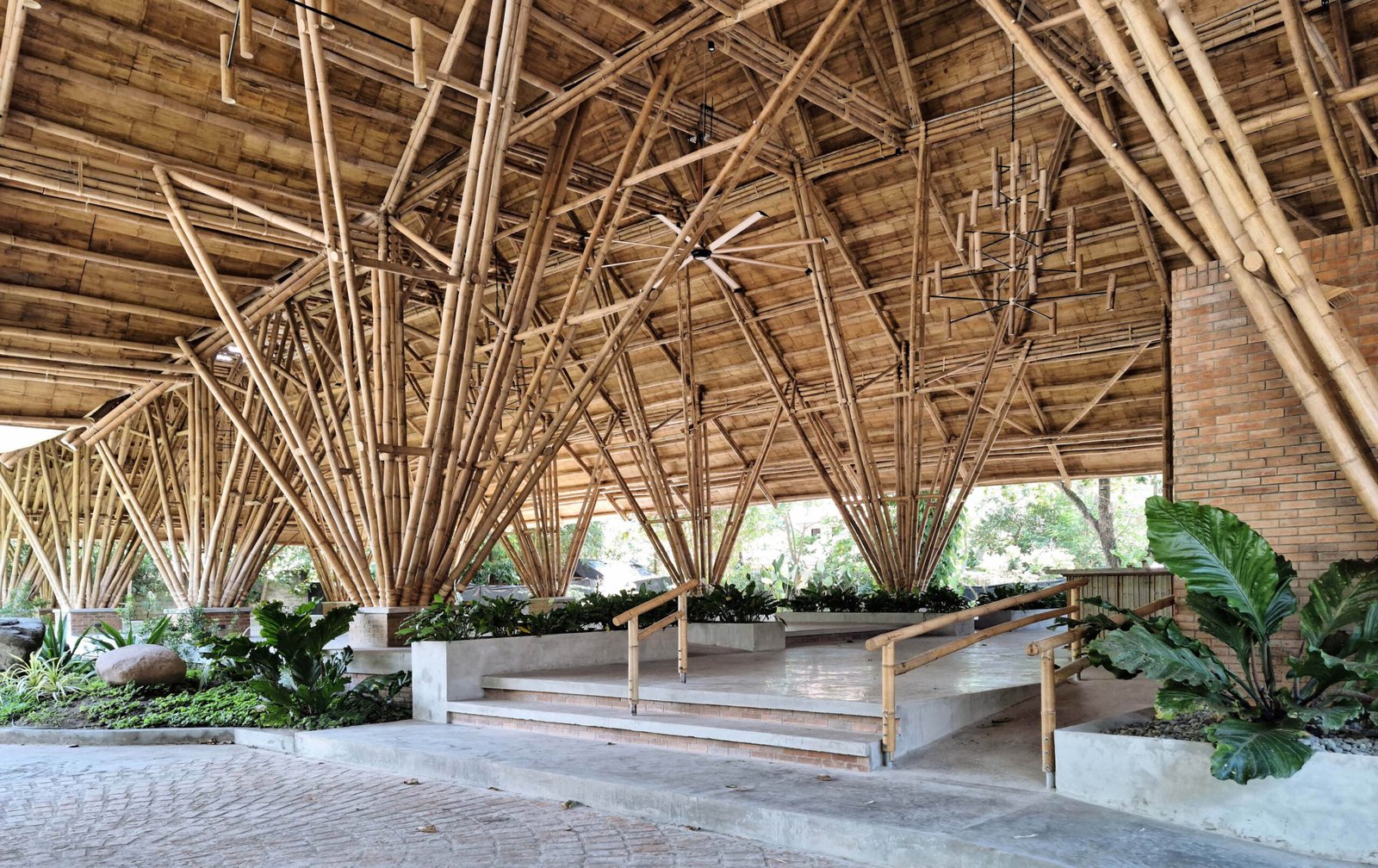

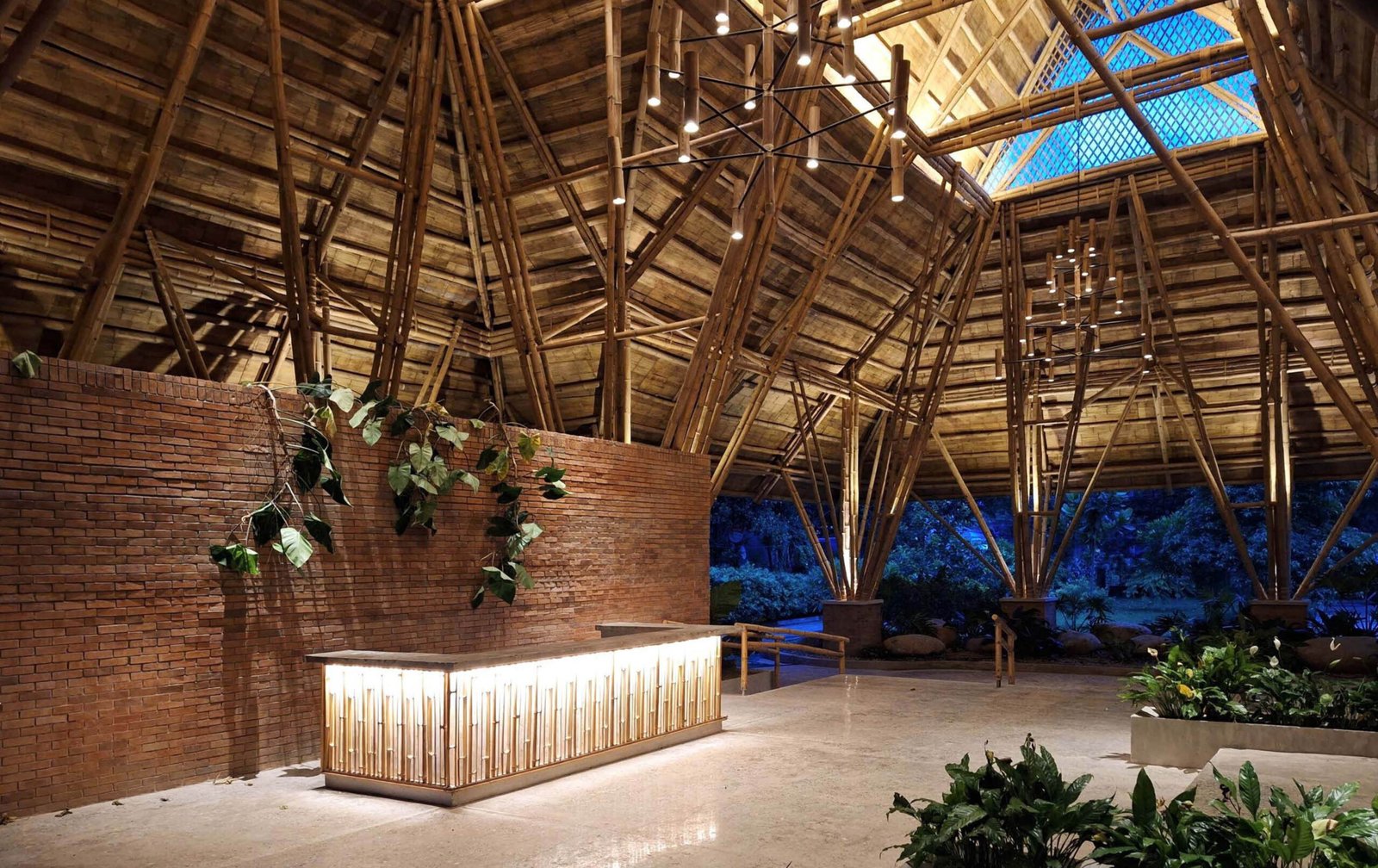

Inspired by the kawayan torogan, the ancestral homes of Maranao royalty, the pavilion incorporates traditional design elements into a modern structure. The raised flooring seamlessly connects the space to its tropical surroundings, while the ventilated roof, with a gap between its layers, allows natural airflow to cool the interior—an adaptation rooted in practicality. The structure’s primary columns, made from clusters of 14 to 20 bamboo poles, reflect how kawayan tinik grows in nature: tall, graceful, and resilient. This composition balances visual impact with structural integrity, showcasing bamboo’s aesthetic value and strength in numbers.
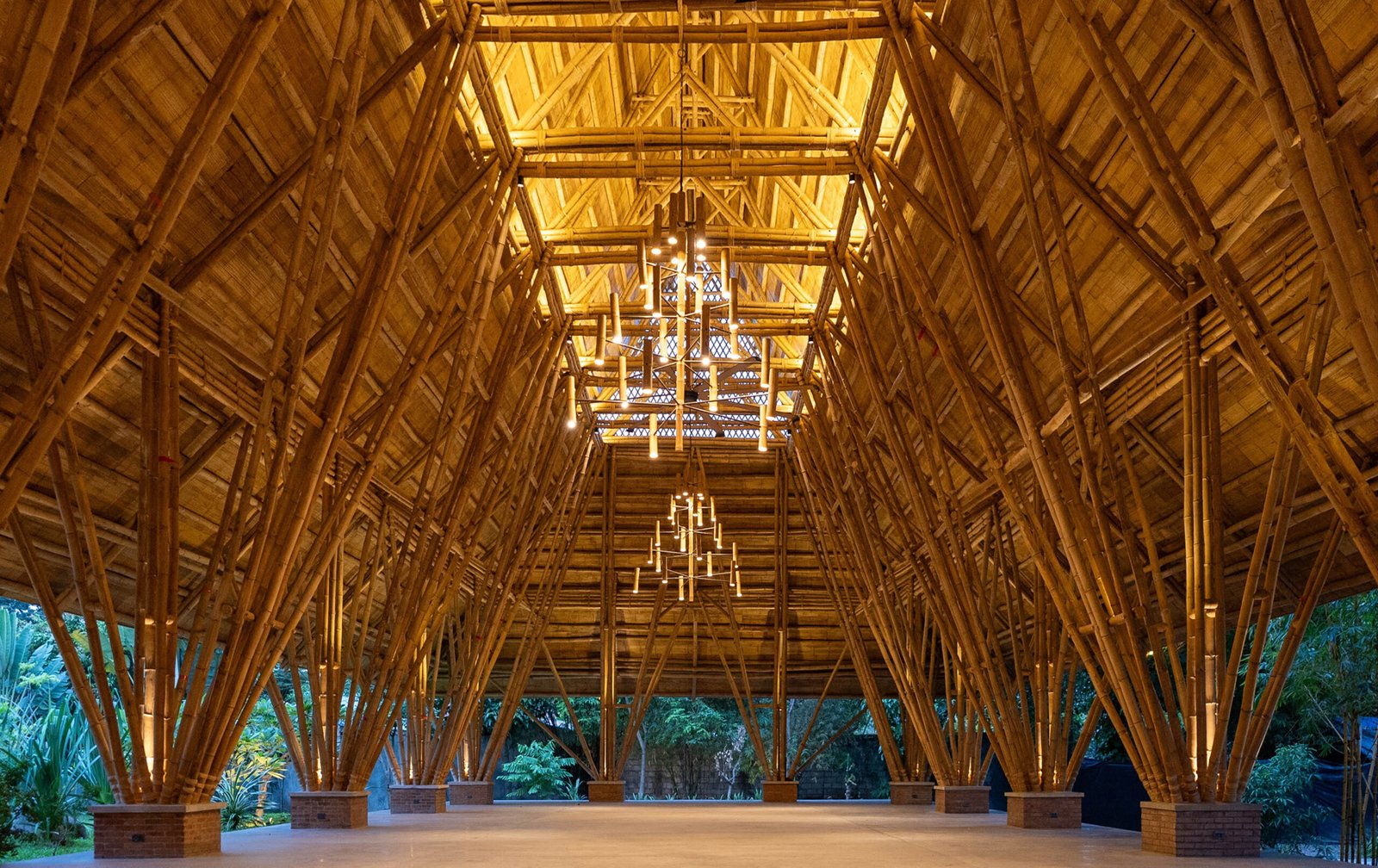

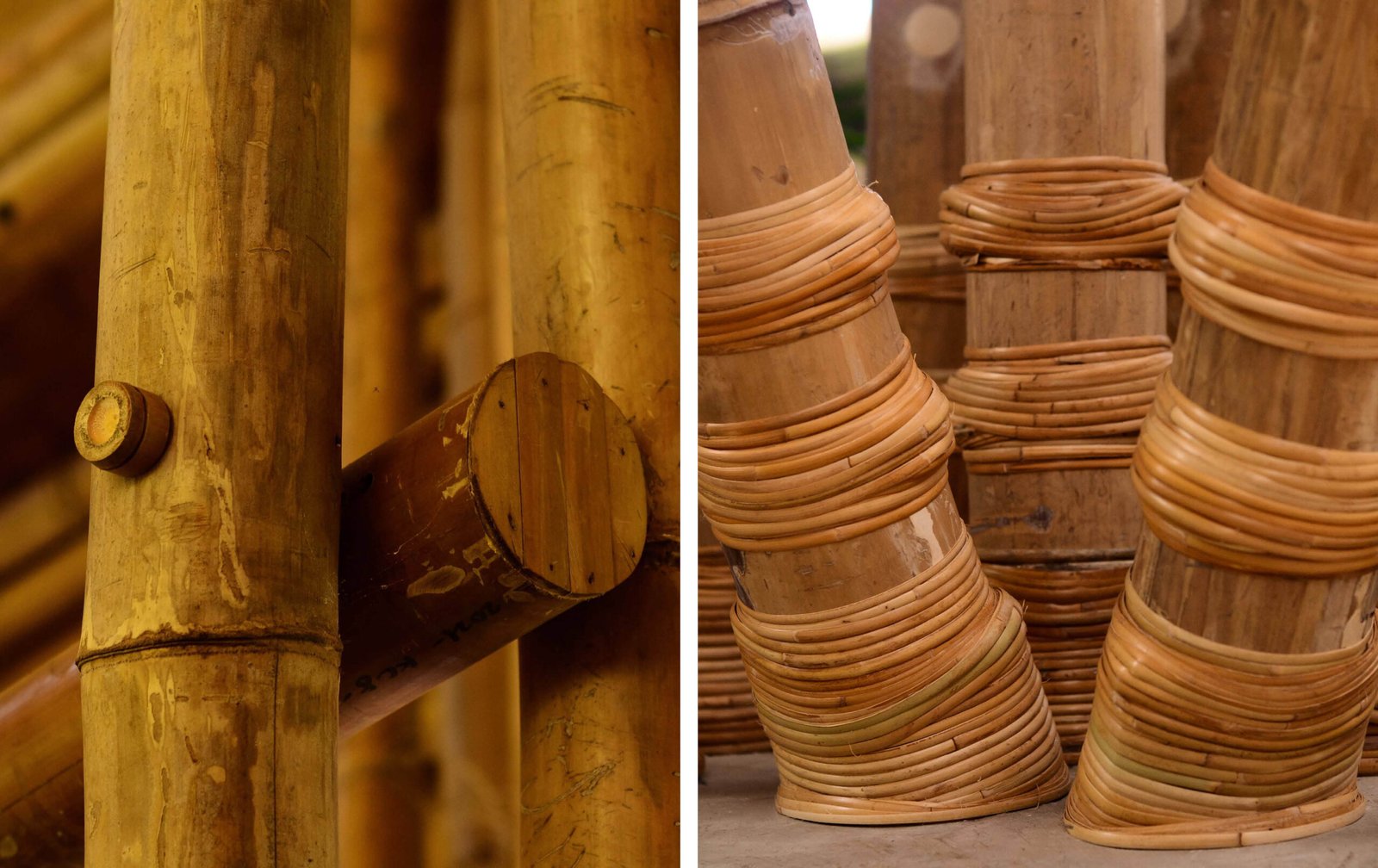

One of the pavilion’s standout features is the firewood-inspired brickwork made from locally sourced clay bricks in Daro, Dumaguete. While its design is contemporary, the brickwork pays homage to traditional Filipino carvings, creating a bridge between past and present. Another detail of note is the concrete pedestal-to-bamboo column anchoring, which stabilizes the bundled bamboo poles and ensures the structure’s durability. The pedestals are then finished with the same clay bricks to soften its material presence.
Architect Rhalf Abne highlights the challenges of working with bamboo: “Every pole has its own character—unique curves, varying thicknesses—but that’s what makes bamboo such a rewarding material. It teaches you to be adaptive while delivering something truly extraordinary.” He also notes that the most significant hurdle isn’t technical but cultural—bamboo is often dismissed as a fragile, impermanent material. The Bamboo Pavilion addresses this perception head-on. Its towering scale and innovative engineering demonstrate bamboo’s potential as a viable material for enduring, large-scale structures while acknowledging that broader acceptance will require continued advocacy and demonstration of its capabilities.
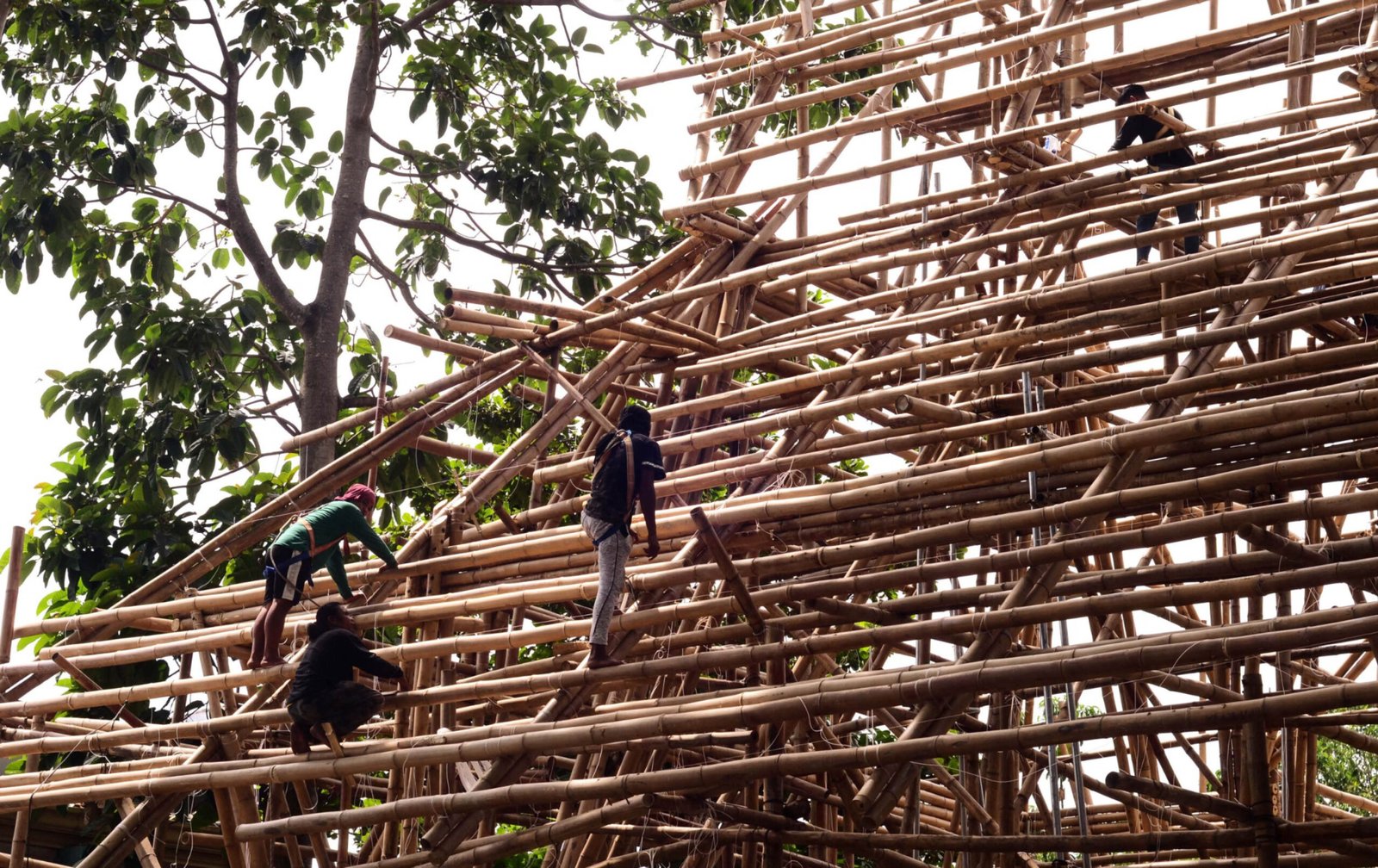

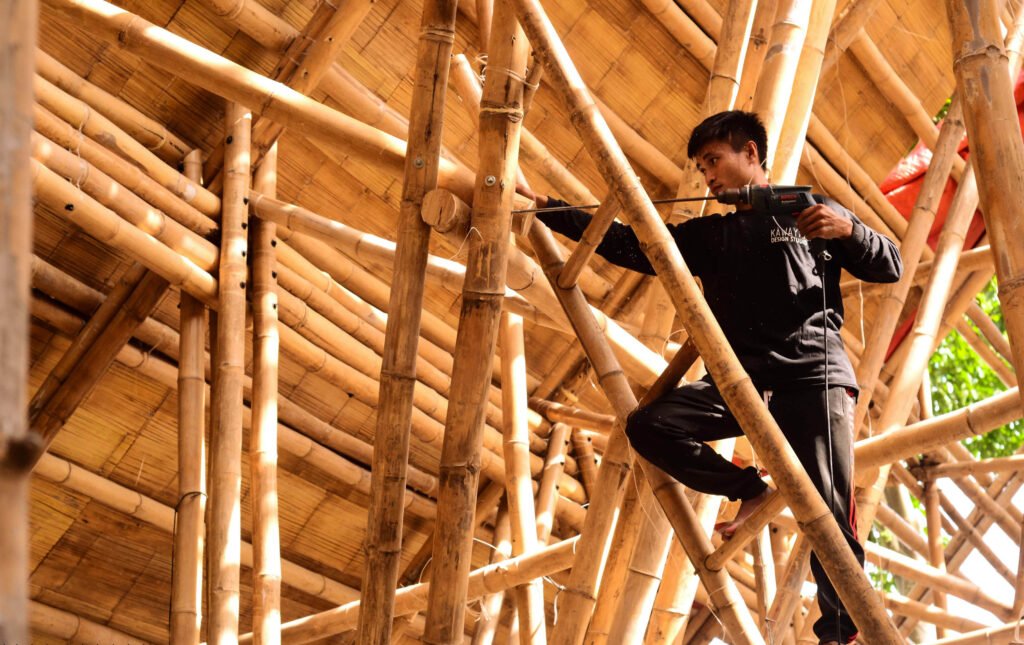

Sustainability is central to the Bamboo Pavilion’s design. More than 3,000 treated bamboo poles, sourced from within 30 kilometers of the site, were used in its construction. These poles, treated by Kawayan Collective, underwent rigorous vetting to meet international durability standards. The team selected Dendrocalamus asper and Bambusa blumeana, species known for their strength and straight growth, making them ideal for a structure of this scale. The pavilion’s use of regenerative materials and local sourcing contributes to a lower carbon footprint, emphasizing bamboo’s role as a sustainable option for modern construction. Collaborating with backyard farmers in Dumaguete to meet the project’s material needs further supports the local economy and demonstrates the potential of community-driven value chains in sustainable architecture.
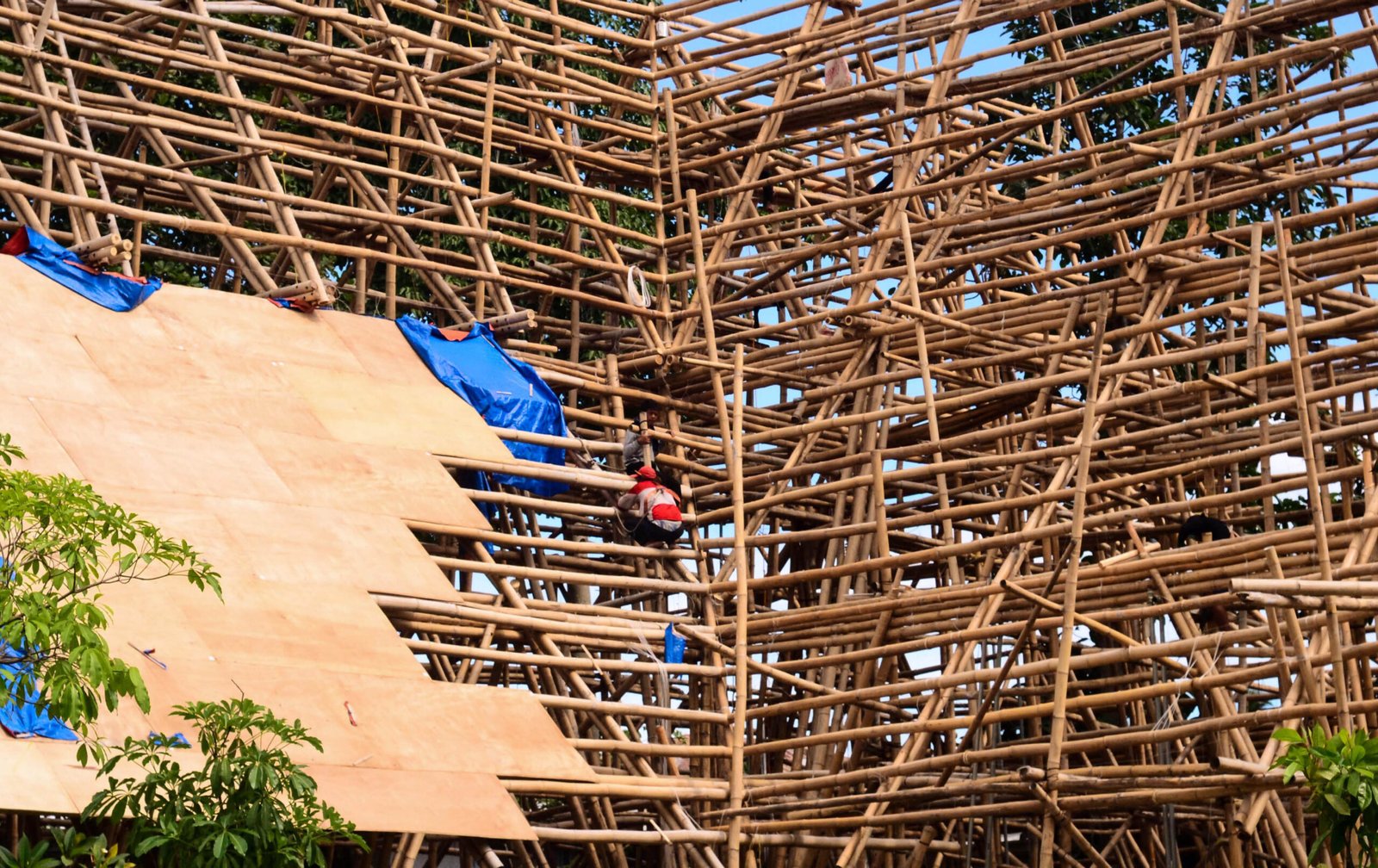



The pavilion’s construction coincides with a broader movement to redefine bamboo’s role in modern architecture. While the pavilion highlights the material’s versatility, durability, and aesthetic appeal, it represents just one example within a growing network of local projects rediscovering bamboo’s architectural potential. Bamboo, after all, was one of the earliest materials used by our ancestors for stilted homes. Architect Ray Villanueva of Kawayan Collective reflects on bamboo’s transformative potential: “Bamboo is more than just a building material—it’s a movement. This pavilion shows what’s possible when we combine tradition, sustainability, and innovation. We hope this inspires new building codes and more bamboo structures across the country.”
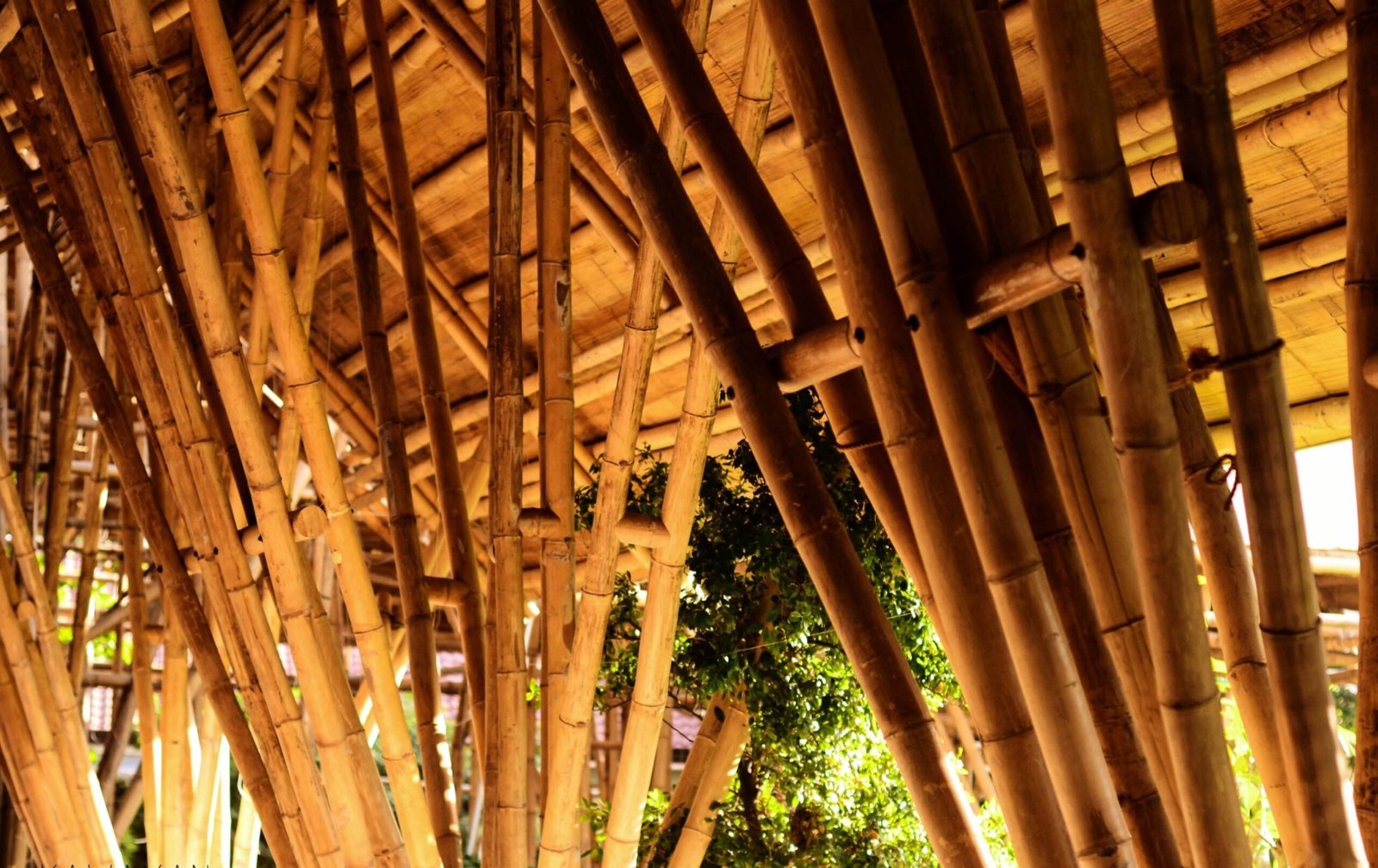

The story of the Bamboo Pavilion is part of a broader effort to elevate bamboo as a primary construction material in the Philippines. Located in a region abundant with natural resources and cultural heritage, the pavilion exemplifies how architecture can celebrate tradition—an enduring trademark of The Henry Resort brand—while embracing innovation and sustainability. It invites visitors to experience a space that thoughtfully intertwines cultural heritage with sustainable design, a testament to bamboo’s remarkable possibilities when crafted by skilled and passionate creators. •
